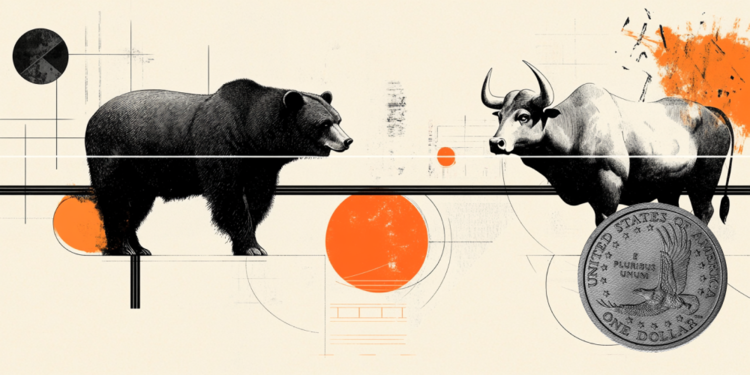The director of Economic Policy at the Central Bank, Diogo Abry Guillen, emphasized this Monday morning (11) that the monetary authority’s calculations do not point to an increase in inflation inertia, despite the persistent rise in prices since last year. .
“Our working hypothesis is that there was no change in the inertia parameter. What we have are persistent shocks over time, which we confuse with persistence of inertia”, he said, in a virtual event promoted by Credit Suisse.
Guillen also pointed out that the Copom raised the estimate of the neutral rate of the Brazilian economy from 3.5% to 4.0% with the understanding that the new level reflects a more symmetrical balance of risks. “With higher inflation and interest rates, models tend to seek a higher neutral rate, which is not the case”, he pondered.
commodities
Diogo Guillen also said at the event that the sustainability of the observed drop in commodity prices at the margin will depend on macroeconomic and microeconomic factors ahead.
According to Guillen, the risk of a global recession is one of the macroeconomic factors that weigh on the downturn in commodities.
At the same time, the reduction in growth expectations in China and the United States helps to explain the movement, with an impact on the prices of metallic commodities.
Guillen also cited among the factors an improvement in the scenario for fertilizers, as part of Ukraine managed to maintain production.
On the other hand, the economist notes that the world has seen a round of restrictions on food exports in producing countries, causing an unusual shock to the global economy.
“This is a different shock. Thinking about agricultural prices, you normally think about weather shocks, shocks of lesser persistence, but this is a different shock, which decreases the efficiency of supply and demand in the agricultural commodity market,” he said.
Higher than expected growth
The recent above-expected economic growth in Brazil was largely transitory, Guillen said, citing conjunctural components that boosted the results.
At a Credit Suisse event on monetary policy challenges, Guillen said that activity in the first half of the year was the result of transitional fiscal measures, such as anticipation of the 13th for retirees and payment of salary bonuses, normalization of sectors in the post-pandemic period and reduction of savings that had been accumulated by families throughout the health crisis.
“In terms of economic activity, (there was) growth above expectations, largely transitory,” he said.
At the event, Guillen also stated that the strategy presented by the BC to bring inflation to around the target involves a terminal Selic higher than market expectations and a longer period of significantly contractionary monetary policy.
GDP projections
Guillen also highlighted that projections for the country’s growth in 2022 have been revised upwards, while estimates for 2023 and 2024 have fallen. He made the statements during a virtual event promoted by Credit Suisse.
According to the Market Focus Report released this Monday, the median for the expansion of the Gross Domestic Product (GDP) in 2022 went from 1.51% to 1.59%. A month ago, the estimate was 1.42%. The estimate for GDP expansion in 2023 remained at 0.50%. For 2024, the estimate fluctuated from 1.81% to 1.80%.
Guillen also pointed out that there is a reduction in the inflation projection of administered, who were affected by electricity tariff flags and high gasoline – before the measures taken by the government to reduce the tax burden on fuel. In today’s Focus, the projection for administered prices in 2022 plummeted from 3.51% to 2.20%. A month ago, the market projected an increase of 6.09%.
The BC director acknowledged that the IPCA in 12 months continues to run at high levels, with an emphasis on the service sector. Commodity prices, on the other hand, have a heterogeneous behavior, with “energy rising, agricultural prices on the side and metals falling”.
Diogo Guillen also said that the monetary policy strategy does not imply an “intertemporal inconsistency”, even if the municipality’s projections for inflation in the relevant horizon are below market expectations.
“I don’t see this intertemporal inconsistency,” Guillen said. “The strategy involves two combined aspects: the first is a higher terminal Selic than the Focus and the second is a significantly longer contractionary time. So, it is a higher curve than the Focus across the horizon”, he added, adding that the Copom’s intention was to explain its strategy, without providing a “forward guidance”.
In the last Quarterly Inflation Report (RTI), the BC predicted an IPCA of 4.0% in 2022 and 2.70% in 2023, below the medians observed in the most recent Focus report for both years – of 5.09% and 3.30%, respectively. According to Guillen, the BC’s strategy involves re-anchoring inflation expectations, especially those that appear in the Focus report. “Reanchoring increases the cost of disinflation. So the objective is always to keep expectations anchored, to reduce the costs of future disinflation,” he said.
According to Guillen, the monetary tightening operates with a lag of close to five quarters in Brazil, which means that most of the lagged impacts will be felt throughout the second half of the year. The BC director also stated that, by signaling a higher interest rate for longer in 2023, the BC shows that there will be an impact on inflation in 2024.
For him, the exercise presented in the last RTI on the impact of a stable Selic rate at 13.25% throughout 2023 on next year’s inflation (-0.3pp) is not an alternative scenario, but a simulation that shows the gain of not reducing interest over a year. “I think of it more as an additional exercise than an alternative scenario, which would have to outline what the interest is over the entire projection horizon,” he said.
Source: CNN Brasil
I am Sophia william, author of World Stock Market. I have a degree in journalism from the University of Missouri and I have worked as a reporter for several news websites. I have a passion for writing and informing people about the latest news and events happening in the world. I strive to be accurate and unbiased in my reporting, and I hope to provide readers with valuable information that they can use to make informed decisions.







